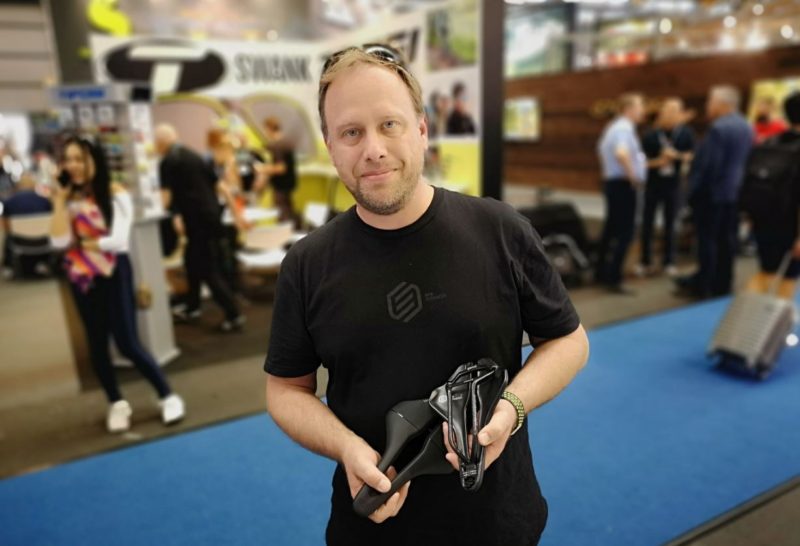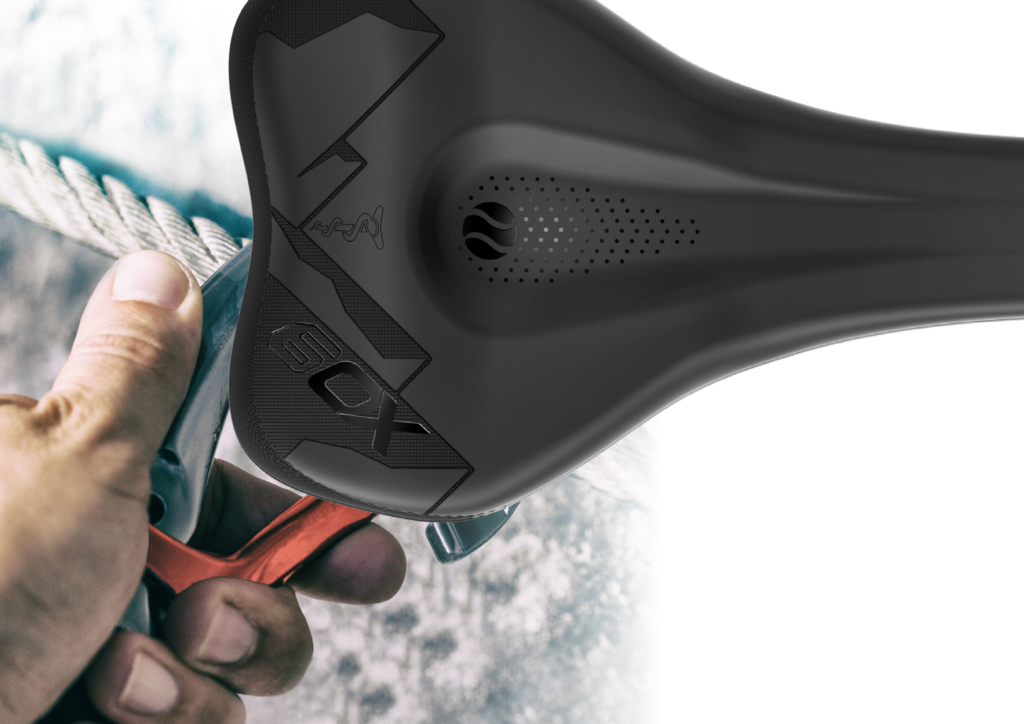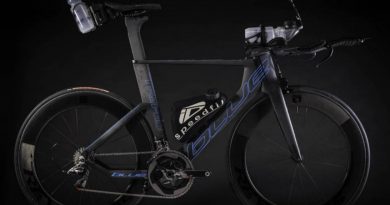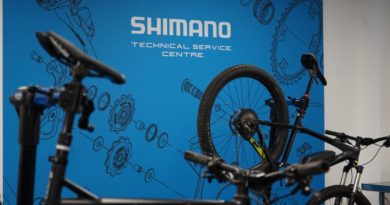ANALYSIS: Bicycle saddle science with saddle design veterans Piet Vandervelde & Sarah Bosch
There’s a lot of noise around the science of saddle fit, indeed prior columns in CI.N have sparked deep debate on what makes the perfect perch. Here saddle design veterans Piet Vandervelde and SQ Lab’s Sarah Bosch tackle the need-to-knows for bike businesses…
Many readers will have a perch they swear by. Whether it was found by pure luck, perseverance in the saddle until ‘bedded in’, or via a professional bike fit, it’s perhaps one of the most crucial component choices. Quite simply, a saddle can put you off riding altogether, so from a retail point of view, it’s the most lucrative component from a longterm custom standpoint.
To explain the phenomenon better and put into context just the level of damage poor saddle choice can do to a rider, Piet Vandervelde, perhaps the bike industry’s leading perch designer, talks over what’s happening.
“Some people say ‘this rider has won this race with this saddle, so it’s good.’ That’s probably the most dangerous advice to follow. When people are not properly measured and sit on soft tissue too long they can develop scar tissue and this can close off vains or nerves. This process, once established, cannot be reversed and can cause erectile dysfunction or other problems such as numbness or pain.”
Vandervelde knows the Gluteus Maximus (that’s your bum) well; so well in fact that his studies have seen him examine human bodies in the Anatomy Lab of the University of San Francisco. It was here that he learned that the shape and volume of soft tissue can vary a lot from person to person and it really comes down to the right supportive fit and clearance available in a saddle. “I’ve fitted Pro tour athletes on what some brands call women’s saddles,” starts Vandervelde,” but the shape and clearance is exactly what this person needed and for the first time this Pro Tour rider was capable of transferring his power properly. The fact of the matter is this was a wider size saddle with a larger cut out, just what this particular rider needed.”

With so much movement over a long ride the answer is rarely as clear cut as checking static measurements. For this reason, fitting becomes a valuable sales tool to the bike shop and one for which shops should charge for their expertise.
“Showing a measuring bench is the first step to helping a customer understand there’s more to saddles than padding,” says SQ Lab’s Sarah Bosch. “Asking customers if they are satisfied with the current saddle and if they are interested in a free measuring opens doors and you will definitely increase sales. Pretty much everyone has problems that can be fixed in store with the right knowledge.”
Vandervelde concurs, adding that all bike fits should begin with the saddle, but why?
“The saddle is the key factor in establishing the balance of the rider on the bike and their knee tracking, as well as the reach of the upper body towards the handlebar, but that starts with setting
the rider on the correct saddle first.”
Interestingly, we’re told that, at the higher-end of the market, OEM makers may be seeing the saddle as they do the pedal; a very personalised choice and one that will be immediately changed by the enthusiast. Could we then see a point when high-end bikes are supplied without saddles?
“The OEM bike manufacturers have stopped spending money on saddles that they put on bikes,” says Vandervelde. “This stands to raise the fortunes of the aftermarket saddle business and we
have seen an increase certainly over the past ten years already.”
The market for high-end has a newcomer that draws mixed feelings from the industry and from our experts when we ask, is an “e-Bike specific” saddle all marketing jargon and snake oil?
SQ Lab believes such a thing has a place and as such saddles badged this way feature in the portfolio.
Bosch says of the firm’s research here: “Especially with E-MTBs the user is able to climb way steeper uphill. The result of this is quite different demands to the seat. The proven SQlab Active technology has been adjusted for E-MTB and Gravity applications and is now firmer. These saddles come in three densities: soft, medium and hard. Pelvis movement of up to 7° is made possible by the SQlab Active technology, which from a biomechanical point of view simulates the natural movement of walking and increases the efficiency of the pedaling motion. At the same time, the spinal discs are relieved and the pressure to the sit bones is reduced. For E-MTB use this means more movement in the saddle.”

With nearing 20 years designing for the likes of Prologo, Specialized, Selle San Marco and Selle Italia, among many others, Vandervelde is unconvinced on the idea.
“Other than the fact that you may see more inexperienced riders on performance bikes, the bike fit remains the same and saddles have to pass certain test standards whether the bike is a push bike or and e-Bike,” he says.
One thing the duo agree on is that padded saddle covers certainly fall under the snake oil bracket and both discourage bike shops from continuing to recommend these.
“They effect the comfort a lot, but it’s a turn for the worse,” says SQ Lab’s Bosch. “Gel covers do not stay in place and often they go right to those areas you do not want pressure at all and make your riding experience even worse.”
Vandervelde goes further, saying that the movement on the saddle and compression of the gel directed inwards will often put pressure on soft tissue, exactly what saddle brands are trying to avoid.
So, what exactly should bike shop staff be prioritising when a customer simply asks for comfort?
Bosch says: “A saddle should fit like a pair of shoes. If a saddle is too narrow it creates pressure precisely where there shouldn’t be any. Your customer’s sit bones should lie completely flat on the saddle. This is the only way in which pressure is relieved on the sensitive perineal area in men and on the pubic arch in women, which is generally lower than in men.”
Needless to say then, this isn’t a process that can be completed by eye. In 2002, SQlab became the first saddle manufacturer to introduce a system to measure the distance between the sit bones and to calculate the optimal saddle width. Since then the concept has grown immeasurably, sparking many brand specific tools.
In order to check the width of a saddle, draw a projection line across the widest point of the saddle. The useable width is from those two points from which the saddle curvature drops off by more than 1cm on either side. Such is the momentum behind proper fit, many consumer magazine review staff now use this measurement advice in order to ensure the writer can deliver honest and fair feedback in line with the recommended purchase experience.
“What I can say is that saddles with a larger cutout (supposed woman’s saddles) work for men and woman, but men’s saddles (supposed smaller cut outs) do not always work for women. On that experience and assumption we can say that designing saddles with larger cut outs can work for men and woman (exceptions taken into account),” explains Vandervelde.
“After many of these cases I am comfortable saying that we saddle makers need to supply maximum clearance in the saddle for soft tissue space, but from person to person that can change a lot. We cannot claim that there is a difference between soft tissue clearance needed from male to female, because that would mean we should be able to measure that and determine what it is. However, this we cannot do due to variance in gender, race, body type and the aging process.”
Training to fit is a key skill for the bike shop, but ultimately this is an opportunity to, at worst, monetise your knowledge and at best sell a saddle. Some may opt to offer the fit free with a saddle sale, but at the very least this is the bike shop’s defense against internet discounting on sales.
It is highly recommended by both of our experts to hold an appropriate stock of SKUs ready to close the deal, but more important is merchandising the service as part of any sale. Too large a range post fit actually dilutes the ability to close a deal, concludes Vandervelde.
“Break down your saddle wall like the Berlin wall! Talk to the consumer from a needs and solutions point of view and offer them only the saddles that serve their specific needs. Imagine that car salesmen that sees you standing next to the Ferrari. You say, ‘we’re going on a family camping trip to the Rockies, we’ll bring bikes and tents’. A good salesperson will direct you to the SUV behind and gain a happy, returning customer. A bad sales manager will sell the Ferrari and never see them again.”
Both SQ Lab and Ere Research are available to shops via One Way Distribution, contactable on: +31 10 3403510.



